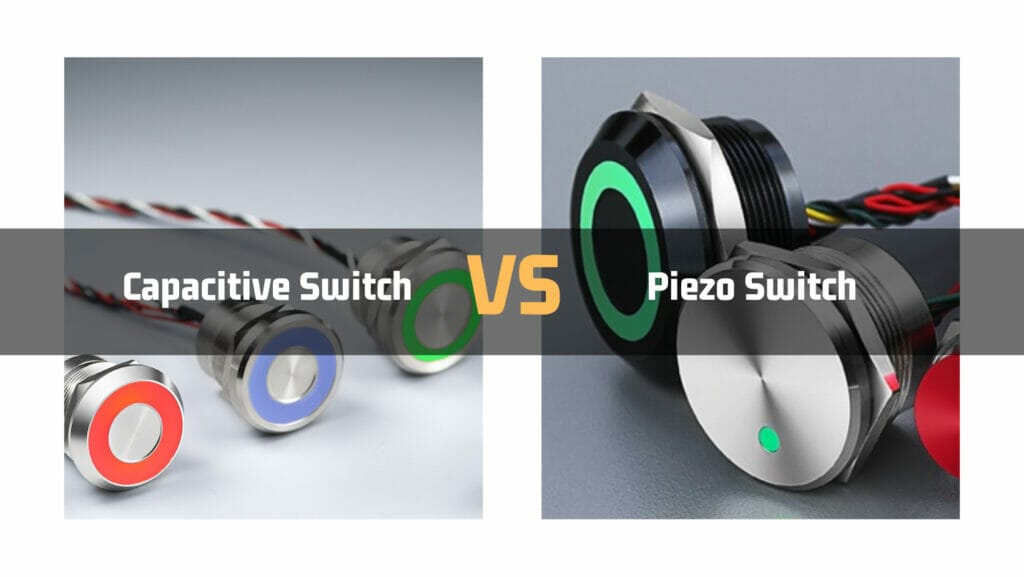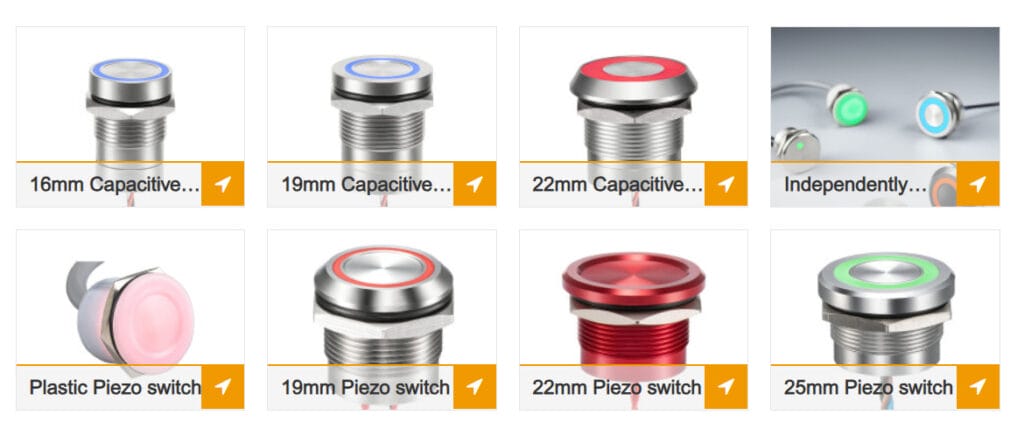
In today’s fast-paced world, technological advancements have made our lives more convenient and efficient. One such advancement is the development of touch-sensitive switches, which have found their way into various industries and applications. Among these switches, capacitive switches and piezo switches stand out as popular choices. In this article, we will delve into the world of capacitive switches and piezo switches, comparing their features, advantages, and use cases. By the end of this article, you’ll have a clear understanding of which switch technology suits your specific needs.
Understanding Capacitive Switches
What is a Capacitive Switch?
A capacitive switch is a type of touch-sensitive switch that operates based on changes in capacitance. It relies on the principle that the human body can store an electrical charge, and when a conductive object (like a finger) approaches the switch’s surface, it disrupts the electrical field, triggering the switch’s response.
Advantages of Capacitive Switches
- Sensitivity: Capacitive switches are highly sensitive and respond to the lightest touch, making them ideal for applications where precision is crucial.
- Durability: These switches have no moving parts, ensuring a longer lifespan and resistance to wear and tear.
- Customization: Capacitive switches can be designed with various materials and shapes to fit different aesthetics and functions.
Common Applications
- Touchscreens and smartphones
- Industrial control panels
- Home appliances
- Medical devices
Exploring Piezo Switches
What is a Piezo Switch?
A piezo switch operates on the piezoelectric effect, which generates an electric charge when pressure is applied to certain materials, such as quartz or ceramics. When this charge is created, it triggers the switch to change states.
Advantages of Piezo Switches
- Robustness: Piezo switches are highly robust and can withstand extreme environmental conditions, including moisture and temperature fluctuations.
- Vandal Resistance: Due to their sturdy construction, piezo switches are resistant to vandalism, making them suitable for public areas.
- Longevity: These switches have a long lifespan, often surpassing traditional mechanical switches.
Common Applications
- Elevator buttons
- Outdoor kiosks
- Industrial machinery
- Marine and automotive controls
Capacitive Switch vs. Piezo Switch: A Comparison
1. Performance
| CAPACITIVE | PIEZO | |
| Sensitivity | Extremely sensitive, responds to a light touch. | Requires a more significant force to activate. |
| Durability | Durable but not as rugged as piezo switches. | Exceptionally durable and resistant to harsh conditions. |
| Customization | Offers design flexibility in terms of materials and shapes. | Limited customization options due to the nature of piezo materials. |
| Outdoor Applications | Suitable for some outdoor applications but may be affected by environmental factors. | Ideal for outdoor and marine environments. |
2. Installation and Maintenance
| CAPACITIVE | PIEZO | |
| Installation Ease | Relatively easy to install, similar to traditional switches. | Requires precise installation due to the need for pressure-sensitive materials. |
| Maintenance Requirements | Minimal maintenance needed; occasional cleaning may be required. | Virtually maintenance-free, thanks to their robust design. |
3. Cost Considerations
| CAPACITIVE | PIEZO | |
| Initial Cost | Generally more affordable for standard applications. | Typically costlier due to their specialized materials and durability. |
| Long-Term Cost | May incur higher maintenance costs over time. | Offers long-term cost savings due to durability and minimal maintenance. |
4. Customization and Aesthetics
| CAPACITIVE | PIEZO | |
| Aesthetics | Offers a wide range of design possibilities, making them suitable for modern and stylish applications. | Known for their simple and rugged appearance, which may not fit all design aesthetics. |
| Feedback Options | Can incorporate haptic feedback for tactile responses. | Typically provides auditory feedback with a distinctive click sound. |
5. Environmental Impact
| CAPACITIVE | PIEZO | |
| Energy Efficiency | Consumes minimal power when not in use. | Highly energy-efficient, as they only consume power when activated. |
| Sustainability | Can be made eco-friendly with the right materials and manufacturing processes. | Known for their eco-friendly materials and long lifespan, contributing to sustainability efforts. |
Conclusion
Choosing between capacitive switches and piezo switches is not a one-size-fits-all decision. Your selection should align with your specific project requirements, considering factors such as sensitivity, durability, aesthetics, and budget constraints.
In summary, capacitive switches offer sensitivity and design flexibility, making them suitable for various indoor applications. On the other hand, piezo switches excel in durability, making them ideal for outdoor and harsh environments.
When making your decision, evaluate the unique needs of your project and prioritize the features that matter most to you. Whether you opt for the elegance of capacitive switches or the ruggedness of piezo switches, you’ll find a touch-sensitive solution that enhances your user experience.
FAQs
Q1: Are capacitive switches sensitive to water?
Capacitive switches can be sensitive to water, but some are designed with water-resistant features.
Q2: Do capacitive switches require a power source?
Yes, capacitive switches need an electrical power source to operate.
Q3: Can capacitive switches be used in industrial settings?
Yes, capacitive switches are suitable for industrial control panels and other applications with specific design considerations.
Q4: Do capacitive switches work with gloves on?
Some capacitive switches are designed to work with gloves, while others may require direct skin contact.
Q5: Can piezo switches be customized in terms of appearance?
Piezo switches offer limited customization options compared to capacitive switches.
Q6: Are piezo switches suitable for home automation systems?
Piezo switches can be used in home automation, especially for outdoor or moisture-prone areas.
Q7: Are there any health concerns associated with prolonged use of piezo switches?
Piezo switches are safe for extended use and do not pose any health risks.
Q8: Which switch is more suitable for outdoor use?
Piezo switches are better suited for outdoor and marine environments due to their durability.
Q9: Are there hybrid switches that combine capacitive and piezo technology?
Yes, some switches incorporate both technologies to offer a balance of sensitivity and durability.
Q10: Can I retrofit my existing mechanical switches with capacitive or piezo switches?
Retrofitting is possible but may require professional installation to ensure compatibility.
Send your inquiry now
All Langier News:
Read Moreelectronica 2024 Hall-Stand No.: A2 160 November 12-15, 2024 Tr...

 English
English 简体中文
简体中文





